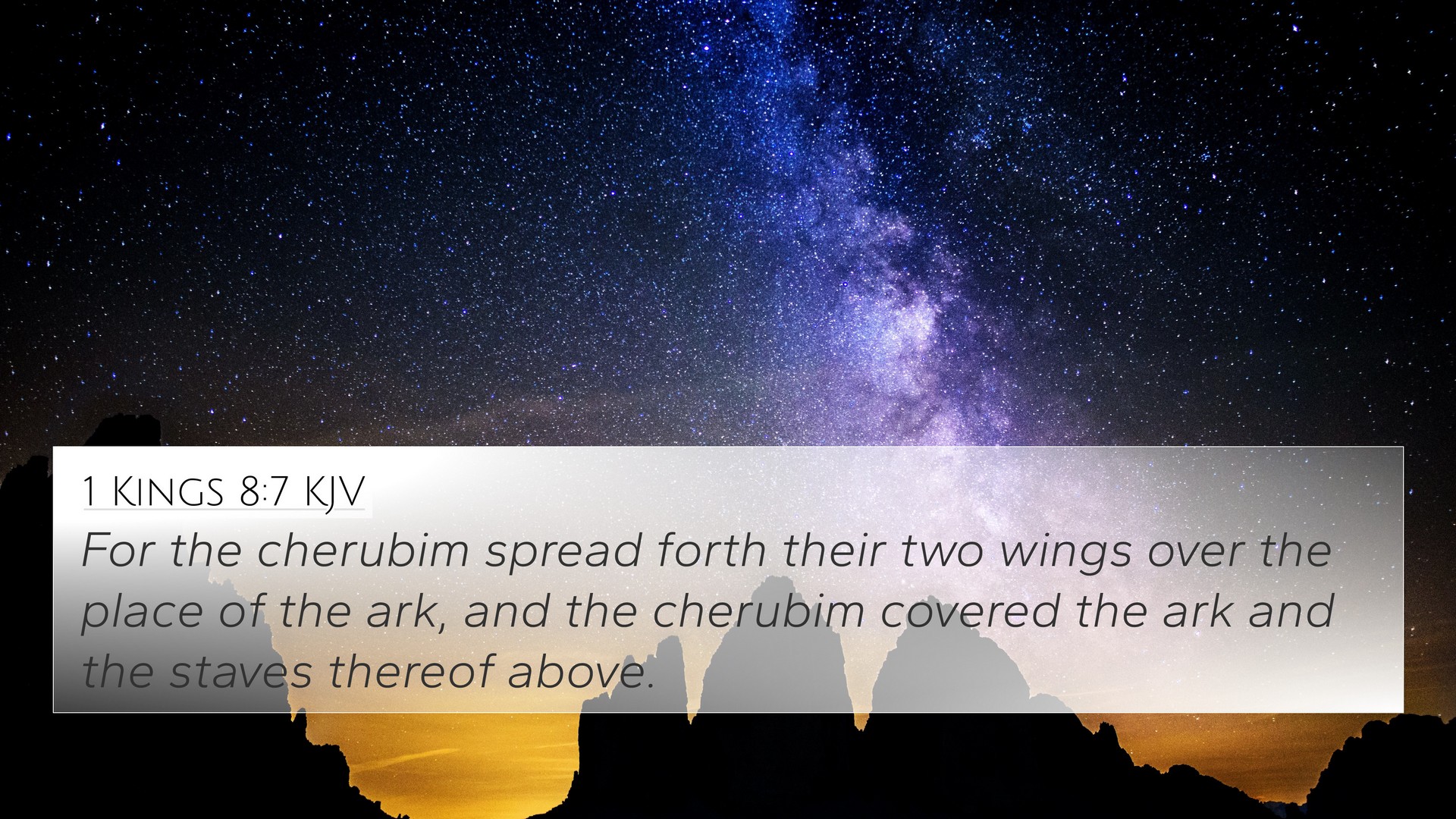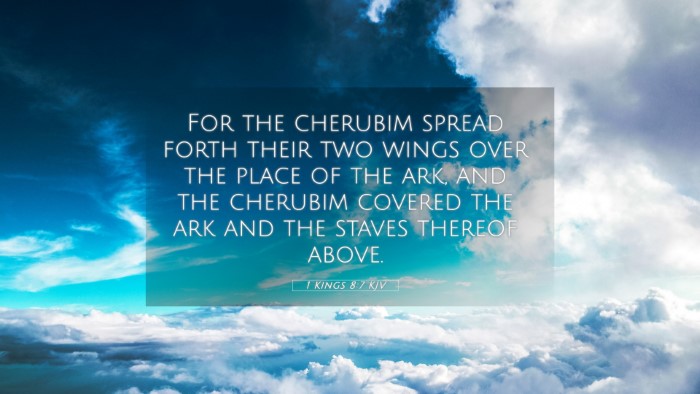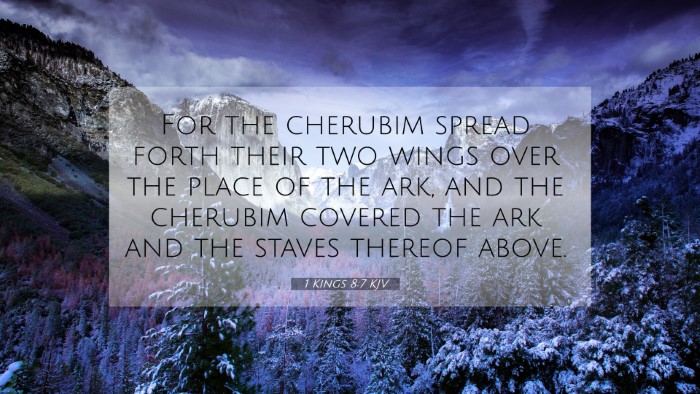Understanding 1 Kings 8:7
Verse Reference: 1 Kings 8:7 - "For the cherubim spread their two wings over the place of the ark, and the cherubim covered the ark and its poles from above."
Summary of the Verse
This verse reveals the significant role of the cherubim in the Holy of Holies, where the Ark of the Covenant resides. The cherubim, with their outstretched wings, not only symbolize God's divine presence but also act as guardians of the sacred space, illustrating the connection between heaven and earth. The ark, as a representation of God's covenant with His people, is central to worship and divine interaction.
Bible Commentary Insights
-
Matthew Henry:
Henry emphasizes that the cherubim are emblematic of the divine throne of God. Their wings reflecting God's protection, signify that while God is transcendent, He also desires an intimate relationship with His people. The ark, covered by the cherubim, signifies God's mercy and the significance of approaching Him with reverence and humility.
-
Albert Barnes:
Barnes further articulates that the construction of the cherubim highlights the artistry and care involved in the creation of the temple. He points out that cherubim not only served a decorative purpose but were integral to the worship experience, facilitating a deeper understanding of God's holiness and grace. The ark being covered represents the idea of God providing a covering for our sins through mercy.
-
Adam Clarke:
Clarke provides context by discussing the historical significance of the Ark of the Covenant, elaborating on its meaning as a testament of God’s promises. The cherubim's wings overshadowing the ark depict a protective embrace, symbolizing God's presence among His people and the protection He offers in their worship.
Related Bible Cross-References
- Exodus 25:18-22: Description of the cherubim on the mercy seat.
- Psalm 99:1: The LORD reigns; let the peoples tremble! He sits enthroned upon the cherubim; let the earth quake!
- Hebrews 9:5: Above it were the cherubim of glory overshadowing the mercy seat; of these things we cannot now speak in detail.
- Revelation 4:6: And before the throne there was as it were a sea of glass, like crystal; and around the throne, on each side of the throne, are four living creatures, full of eyes in front and behind.
- Nahum 1:2: The LORD is a jealous and avenging God; the LORD is avenging and wrathful; the LORD takes vengeance on His adversaries and keeps wrath for His enemies.
- Isaiah 6:2: Above it stood the seraphim; each one had six wings... and cried to one another: "Holy, holy, holy is the LORD of hosts."
- Ezekiel 10:1-2: Then I looked, and behold, on the expanse that was over the heads of the cherubim there appeared above them something like a sapphire, in appearance like a throne.
Thematic Bible Verse Connections
- The idea of God's presence being symbolized through cherubim is a recurring theme in scripture.
- The relationship between the mercy seat and divine forgiveness is supported by verses in both the Old and New Testaments.
- Connections can be drawn between the physical representation of God’s glory in the temple and the spiritual presence of God in believers' lives.
How to Utilize Cross-Referencing for Deeper Study
Using a Bible concordance or cross-reference guide can enhance understanding of themes and messages shared across different scriptures. Here are some approaches:
- Identify Themes: Look for recurring themes or symbols, such as divine presence or mercy.
- Explore Connections: Observe how different verses reference the concept of God's throne and His protective nature.
- Compare Texts: Apply comparative analysis methods to discern similarities and contrasts between verses.
Conclusion
1 Kings 8:7 is a powerful narrative that emphasizes the significance of the cherubim surrounding the Ark of the Covenant in the temple of the Lord. By understanding the protective symbolism they embody and their relationship with God's presence among His people, individuals can appreciate the depth of worship and divine communion portrayed in scripture. The cross-references and commentaries provide a rich backdrop for further exploration and understanding of biblical themes.


